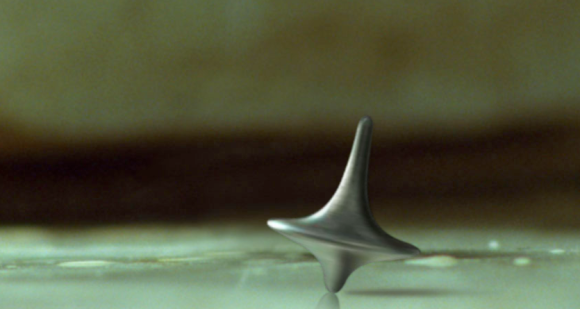Christopher Nolan’s first draft of his 2010 movie INCEPTION arose in 2001, shortly after his breakout hit MEMENTO. The project that eventually became INCEPTION was put on the backburner for years, as Nolan wanted more experience with “large-scale film production” before taking it on. One of the central criticisms of the movie is that it is an expensive summer blockbuster that doesn’t really have anything to say. It can be a dense and tedious film at times, but it has a lot to say about the nature of storytelling and the need for mimesis in a narrative.
Much has already been said about INCEPTION serving as a metaphor for filmmaking. The picture is pretty clear with each character fulfilling very specific roles: Tom Hardy as the actor, Ellen Page as the writer, Joseph Levitt as the executive producer, Ken Watanbe as the financier, and Leonardo DiCaprio as the director. I’m not going to say that DiCaprio is serving as Nolan’s stand-in as others have, but it is eerie how similar they look. There’s a really nice scene around the middle of the movie that involves most of the cast sitting in a circle rehearsing their heist, looking and acting suspiciously like a script-workshopping session. At any rate, these characters come together to create singular worlds that Cillian Murphy’s character (the audience) can inhabit and participate in. All of the stakes in the narrative rely on Murphy’s belief that these worlds are real; if at any time his suspension of disbelief is broken, the team’s efforts (all the set up, all the spent money, all the planning) is for naught. But why is that so important?
Nolan’s idea of inception is that in order for an idea to take place, it must be cultivated organically. It needs to feel real. It’s not about showing or telling; it’s about making the person feel as if they are part of the experience. Murphy’s character needs to believe in the world created for him, just as we need to believe in the characters we see on screen. This leads to what INCEPTION is really about: the reality of catharsis. The only way for Murphy to experience catharsis is by believing in the world that he has inhabited. The same premise holds true for audience members or any medium; if the work does not hold some truth to it, catharsis may be identified and recognized, but it will not be experienced. Nolan demonstrates this point effectively: the most dramatically powerful scene in the movie, when Murphy finds his father in the hospital bed, is completely false. As the audience, we know that this moment is a fabrication, and we know that it is all an invention of narrative; Murphy’s father in the scene exists as much to us as it does to his son. This point is the most emotionally engaging exchange in the movie, but what’s curious (and intentional perhaps) is that it is more emotionally salient that the “real” catharsis that DiCaprio experiences by learning to let go of his past.
But what of the end? The last shot of the movie shows DiCaprio walk to his children, turning his back on his totem. Many have argued over whether or not this last frame is contained in a dream or within reality, but I believe that the entire point is that it doesn’t matter. Nolan left the ending ambiguous for a reason, but he has even gone on record saying that he believes that what we see is part of reality. If DiCaprio is actually lost within the dream world, he has found a way to reconnect with his children. If what we’ve seen on screen is true, he’s found a way to reconnect with his children. It does not matter to DiCaprio if his spinning top falls or not, and it should not matter to the audience either. In the end, the character experiences his emotional cleansing, and regardless of if it took place in a dream or in reality, it changed him. Similar to Murphy’s pivotal scene, the experience (real or “fake”) has the power to transform those who allow themselves to experience it.
Rewatching INCEPTION provides no clues to the nature of this final scene; unlike THE PRESTIGE, whose narrative intricacies are only highlighted with repeated viewing, INCEPTION is slippery and avoids showing its hand. It does not matter if what you felt was real or a dream, what matters is that you felt it.

